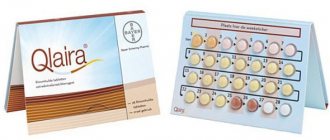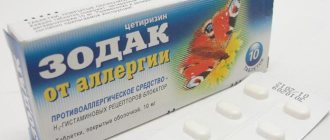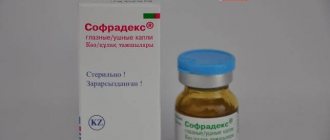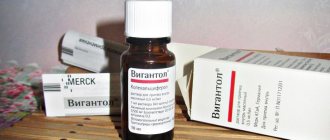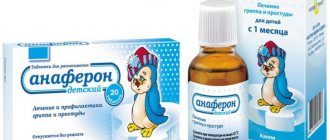Systane Ultra drops are a keratoprotective composition. It is applied to the cornea to moisturize its surface and also relieve discomfort in the visual area. The basis of the drug is a system of polymers, which contributes to the durability and duration of the results from the use of drops, helps prevent dryness of the eye shell and associated unpleasant sensations. The properties of the components of the drug ensure its mild and rapid action.
Systane Ultra eye drops
General information
What drug is effective for conjunctivitis? Systane eye drops are one of the most popular ophthalmic products, which belongs to the group of rehydrants and is actively used to moisturize the eyes.
The medication in question effectively eliminates all signs of irritation and dryness of the visual organs. Due to its special consistency, the polymer inert solution is not capable of exerting a mechanical effect on the mucous membrane of the eye.
This medicine is actively used to moisturize the membrane of the visual organs. The drug does not negatively affect the process of tear fluid production, but only forms a protective film that helps eliminate all unpleasant symptoms that arise due to the influence of external factors.
How does dry eye syndrome manifest?
Please note that we are talking about a SYNDROME, that is, a complex of symptoms, and not about any one symptom.
And if a person has red eyes, this does not necessarily indicate dry eye syndrome.
The most typical manifestations of dry eye syndrome:
- Dryness in the eye or, paradoxically, lacrimation.
- Sensation of a foreign body or sand in the eyes.
- Burning.
- Fluctuations in visual acuity during the day. For example, in the evening there is some blurring of vision.
- Slight redness of the eyes. Vessels are visible, or, in medical terms, an injection of the sclera is noted.
- Painful sensations when instilling drops that previously did not cause any unpleasant symptoms.
- The eyes have become more sensitive to cigarette smoke, city smog, and air-conditioned air.
If you hear such complaints, you can recommend tear substitutes without a doctor.
But if several similar remedies have been tried, and there is zero point and the same number of tenths, the visitor should be advised to consult an ophthalmologist.
Composition and packaging of an ophthalmic product
What substances do Systane drops contain? This drug contains no separate active ingredients. Its therapeutic effect is achieved due to the combined action of such components as sodium chloride, polydronium chloride, 0.001% polydronium chloride, potassium chloride, purified water intended specifically for injection and instillation, hydroxypropyl guar, calcium chloride, sorbitol, sodium hydroxide, zinc chloride, polyethylene glycol, propylene glycol and boric acid.
Systane drops are sold in 15- or 10-ml dropper bottles, which are placed in cardboard boxes.
How is dry eye syndrome treated?
Depending on the results of the examination, the doctor prescribes the appropriate remedy or even several.
If there is a deficiency of the aqueous layer, low-viscosity tear substitutes are recommended:
Hilo-Komod, Natural Tear, Oftolik, Slezin, Optiv, Oksial, Hilabak, Vizin pure tear.
You can also use Systane, Systane Ultra. They do not affect the viscosity of the tear fluid, but moisturize the surface of the eyes and quickly eliminate discomfort.
For pathology of the mucin layer, products based on hyaluronic acid, which is part of this layer, or high-viscosity drugs are optimal: Oftagel, Vidisik.
And if problems are identified in the lipid layer, products containing lipids are prescribed: Systane Balance or Cationorm.
As you can see, everything here is not as simple as it seems.
And the question arises:
What to recommend when a buyer complains of burning, stinging, dry eyes, or a feeling of sand?
You're not wizards and you can't determine what happened to the tear film? In which of its layers did the problem appear?
I offer you the following algorithm for suspected dry eye syndrome.
Action of the medication
How do Systane eye drops work? The use of such a drug helps reduce dryness and symptoms of eye irritation (for example, burning sensation, itching, redness).
The therapeutic effect of the medication begins almost immediately after instillation and lasts throughout the day.
When Systane drops get on the mucous membrane of the eye, a delicate polymer film is formed that protects the visual organ from irritation and drying out. Throughout the day, the moisturizer is gradually washed away naturally (along with tears).
Contraindications
The main contraindication to the use of the drug is personal intolerance to its components. Hypersensitivity to eye drops is indicated by symptoms such as red eyes, watery eyes, itching, burning or blurred vision. If a similar reaction occurs after instillation, you should stop use and consult an ophthalmologist.
The drug is not prescribed to children under 18 years of age, pregnant women, and nursing mothers, because the safety and effectiveness of its use in childhood and during pregnancy and lactation have not been studied.
Other indications
In what other cases can Systane drops be used? In addition to eliminating dry eye syndrome, this drug can also be used to protect the visual organs from ultraviolet radiation. The film formed on the mucous membrane of the eye has a small throughput, which reduces the negative effects of direct sunlight.
Sometimes Systane drops are recommended to be used before swimming in natural bodies of water or visiting public pools. The use of the drug in such cases will not allow bleach, pathogenic microorganisms or other bacteria to settle on the mucous membrane of the eye.
When working in a polluted environment, hot climates and rooms where air conditioning is used, the product in question can be used to prevent dehydration and irritation of the visual organs.
How does the lacrimal apparatus work?
A tear, or in a smart way, lacrimal fluid, is formed by the lacrimal glands.
There is a kind of hierarchy among them.
There is a main lacrimal gland (“head of department”) and additional lacrimal glands (“ordinary employees”). They are too small and “scattered” throughout the eye, so it is difficult to show them in the drawing.
All routine daily work is performed by ordinary employees, i.e. additional lacrimal glands. They are located in the conjunctiva, in the cartilaginous plate of the eyelids and secrete fluid, which is necessary for CONSTANTLY HYDRATING THE SURFACE OF THE EYE.
“Ordinary employees” of the lacrimal apparatus are also goblet cells of the conjunctiva, meibomian glands in the thickness of the cartilage of the eyelids, sebaceous and sweat glands in the area of hair follicles of the eyelashes.
In total, the additional lacrimal glands produce approximately 2 ml of tears per day. This is quite enough to moisturize the entire surface of the eyeball, that is, to form a tear film.
Only for this we need to blink so that the hydration is constant and uniform.
And the most amazing thing is that for this we do not need to write ourselves a reminder:
“Don’t forget to blink!”
All this happens by itself.
Blinking prevents the eyes from drying out when they are exposed to “all winds”: light, frost, heat, dry room air.
If we don’t blink, the tear film, as a result of various external factors, dries out, breaks, and we need to close our eyelids to fix everything. This process is a kind of pump that pumps tear fluid from the lacrimal glands.
That is why frequent blinking is a must in eye exercises.
Blink more often, gentlemen!
Blink-blink! Do you think I don't see you?
During sleep, the eyelids are closed. This prevents the eye from drying out.
The tear fluid washes the front surface of the eye and flows through the tear streams (this is the space between the edge of the lower eyelid and the eyeball) into the inner corner of the eye - the tear lake.
Then it enters the lacrimal canaliculi, from there into the lacrimal sac and through the nasolacrimal canal into the nasal cavity.
But since little of it is formed per day, the nose “does not run.”
When a foreign body gets into the eye, as well as when exposed to smoke, bright light, or when inhaling vapors of an irritating chemical substance, for example, ammonia, the “head of the department” is involved in the work, that is, the main lacrimal gland located in the upper-outer edge of the orbit (see .picture above).
A reflexive release of tears begins.
For the same reason, tears flow from the eyes when we cut onions: a volatile substance is released that irritates the mucous membrane of the eyes.
With various emotions, both sad and joyful, the adrenal glands release adrenaline into the blood, and under its strict guidance the activity of various organs, including the main lacrimal glands, increases.
Moreover, they can produce up to 30 ml of tears per minute!
So what's going on?
That's right, we're crying.
More tear fluid is produced. Some of it gets into the nose. And since in this case it is not 2 ml, but much more, we begin to sniffle.
There is a theory that tears partially remove stress hormones from the body, so your soul becomes lighter.
It’s not for nothing that they say: “Cry and you’ll feel better.”
Systane eye drops: instructions for use
A moisturizing ophthalmic preparation is used one to several times a day. It is instilled in the amount of 1-2 drops into each visual organ (as needed).
To obtain the best therapeutic effect, immediately after installations you should blink quickly several times. This is necessary so that the medication spreads over the entire surface of the conjunctiva and reliably protects the eyes.
If the patient was prescribed drops for the treatment of viral diseases or other serious pathologies, then using such drugs in parallel with Systane is not recommended in order to avoid weakening their therapeutic effect.
Release forms
The drops are produced by Alcon Pharmaceuticals, a Russian branch of the American corporation Alcon. A transparent solution that has no particular taste or odor is placed in plastic dropper bottles with a volume of 3, 5, 10 or 15 milliliters. Another convenient form of release is monodoses - individual plastic containers with a sealed lid, intended for single use. The cardboard box contains 5 or 30 dropper tubes with a dosage of 0.7 ml.
The shelf life of the drug is 2 years from the date of manufacture indicated on the packaging.
After opening the bottle, the drops are stored for no more than 6 months.
Use monodoses immediately after opening the cap: they cannot be stored.
Each dosage form is equipped with simple and understandable instructions for use () and is packaged in a cardboard box. The most popular 15 ml bottle of eye drops can be bought in pharmacies for 480 rubles. The average price of five monodoses is 160 rubles.
Alcon is a company specializing in ophthalmic drugs. It produces antibacterial (Tobrex, Vigamox), anti-cataract (Quintax), glucocorticosteroid (Maxidex) and combination eye products. In the Systane line of moisturizers, in addition to Ultra drops, the manufacturer produces:
- Systane Balance drops are a moisturizing agent for the mucous membrane of the eye. Unlike other representatives of the group, it contains the LipiTech system, which stabilizes the lipid film on the surface of the cornea and prevents the evaporation of tear fluid.
Systane Balance is one of the products in the line of moisturizing drops from Alcon.
- Systane gel has a denser consistency and requires careful application to the mucous membranes rather than dropping into the eyes.
Overdose
In ophthalmological practice, there are practically no cases of overdose with Systane drops. Only isolated situations have been recorded where the use of the drug in large quantities or for a long time contributed to a change in the composition of the tear fluid, as well as disruption of the function of the glands that produce tears.
It should also be noted that when using drops for a long period, the patient may experience an unpleasant taste in the mouth. In addition, long-term use of the drug can greatly reduce its effectiveness (almost completely absent). In such situations, you should contact a specialist who will replace the ophthalmic drug with a similar one, but with a different composition.
Interaction with other drops and eye ointments
The simultaneous use of Systane Ultra with other ophthalmic compounds is not advisable because the therapeutic effect of the use of such drugs is due to their contact directly with the surface of the cornea, and moisturizers prevent this.
Systane Ultra should not be used simultaneously with other drugs
Analogs
What can replace the ophthalmic drug "Systane"? A direct analogue of this product is Systane Ultra drops. Experts say this is an improved version of the drug. It costs a little more, but there are practically no differences in the composition. It should also be noted that the effectiveness of Systane Ultra and Systane drops is approximately the same.
The following eye medications have also proven themselves to be effective:
- "Okutiarz" (relieves the feeling of dryness, used after intense visual work).
- “Cationorm” (eliminates even severe signs of dry eyes).
- "Visomitin" (strong keratoprotector, eliminates dry eyes).
- “Inoxa” (moisturizes the conjunctival membrane, helps eliminate “dry eye syndrome”, protects the visual organs from microscopic foreign bodies and pathogenic infections).
- “Oxial (moisturizes the eye membrane, relieves symptoms of irritation and fatigue of the visual organs, is identical to human tear fluid).
- “Ophtolik” (used to moisturize the eyes of people with reduced tear secretion, eliminate fatigue, irritation and redness).
- "Vidisik" (keratoprotector, has a moisturizing effect, is an inert and biologically neutral agent).
When to use the drug
Systane Ultra reliably eliminates signs of eye irritation:
- dryness;
- burning pain;
- itching;
- tingling sensation in the eyes;
- redness.
There are no specific medical diagnoses that serve as indications for prescribing the drug. It is successfully used for eye discomfort caused by exposure to:
- bright sunlight;
- dust particles;
- smoke;
- dry air in air-conditioned or heated rooms and aircraft;
- decorative cosmetics for the eyes (eye shadows, mascara);
- contact lenses.
The solution is often prescribed for “dry eye syndrome”. This problem is associated with spending a long time at the computer or reading in poor lighting conditions.
Elena, 28 years old:
“I work as an editor and spend a lot of time at the computer, so I often walk around with swollen red eyes, as if clogged with invisible sand. Systane Ultra has become a salvation for me: I always keep this medicine in my cosmetic bag and use it as needed.
A 15 ml bottle lasts me a long time - 4-5 months of almost daily instillation 5-6 times a day. I consider the long shelf life of the solution after opening (six months) to be a big advantage of the drug. The drops that I bought before needed to be used within 1-3 months.
I would also like to note the convenient bottle, which is pleasant to hold in your hands, and the narrow, elongated tip: even a child can carefully drip the medicine.
The price, of course, is high - almost 500 rubles. But due to the high efficiency, speed and ease of use of the product, I consider it quite adequate. I can recommend this drug to people who, like me, spend a lot of time at the computer.”
Price of the medicine, additional recommendations
The average cost of the Systane ophthalmic product is 500 rubles (in the central regions - about 540 rubles).
When instilling the drug in question, it is not necessary to remove contact lenses. Systane eye drops do not form compounds and do not contain substances that could in any way affect the optics. After using the medicine, a protective film also forms under contact lenses.
The medication in question is not an antiseptic. It also does not have antibiotic properties.
After instillations, the patient does not experience any visual disturbances. In this regard, immediately after the treatment procedure you can drive a vehicle.
Types and price
Systane Ultra
The basis of Systane Ultra is the substance pyridoxine thiamine. Can be used for those who wear contact lenses. However, at the time of instillation, the lenses must be removed.
If you compare Systane or Systane Ultra, which is better, then it is important to pay attention to the additional component included in the composition. Pyridoxine thiamine enhances the effect of drops, the therapeutic effect is achieved in a shorter time.
You can purchase 3 ml of the drug for about 220 rubles.
Ultra Plus
The uniqueness of Systane Ultra Plus is the content of hyaluronic acid in the composition.
Thanks to it, a more prolonged therapeutic effect is achieved, a high-quality moisturizing layer is created, and moisture on the eye surface is retained up to 4 times longer. The big advantage of the drops is that they can be used by patients with contact lenses (there is no need to remove the lenses at the time of instillation of the drug).
In Moscow, the average cost for a bottle of drops (10 ml) is 480 rubles.
Systain Balance
Systane Balance contains a unique Lipitech system infused with mineral oil and dimyristoyl phosphatidylglycerol.
These components help stabilize the lipid layer of the tear film and significantly reduce the evaporation of tear fluid.
10 ml of the drug can be purchased for an average of 670 rubles.
Long lasting comfort
The peculiarity of this form of the drug Systane is the maximum long-lasting therapeutic effect after instillation.
A one-time use of the drug is enough to provide eye comfort throughout the day.
The purchase price is within 485 rubles per 10 ml.
Systane Gel
Available in the form of a sterile solution, which is instilled into the eyes like regular drops. The composition additionally includes the substances aminomethylpropanol and disodium edetate.
Purchasing 10 ml of solution will cost approximately 620 rubles.
Reviews
Most patients speak exclusively positively about the drug Systane. They claim that the use of such a medicine can quickly eliminate all existing discomfort, as well as get rid of irritation and redness of the cornea.
In addition, the patient is informed that Systane drops well muffle the burning sensation and relieve the feeling of a foreign body in the visual organs.
Experts support all the positive reviews from people. They claim that the film that forms on the conjunctiva immediately after applying the medicine protects the eyeball from almost all external influences, including smoke, wind, dust and chemical fumes. Experts also report that, unlike other similar means, a single instillation of Systane is enough for almost the whole day.
Can Systane Ultra be used by pregnant and lactating women, children and the elderly?
These drops, from the point of view of chemical activity, are an inert agent. They act locally, exclusively on the area of application. The drug does not enter the bloodstream and does not have a systemic effect; it belongs to the category of moisturizing medications that are prescribed not for treatment, but to create a moist layer on the surface of the eyes. That is why they cannot harm children and pregnant women , whose bodies normally tolerate the components of the drug.
Drops will not harm the child
And yet, the manufacturer reports that it does not have accurate information regarding the effect of Systane Ultra on such patients, and therefore recommends that they use drops only with the approval of an ophthalmologist.
As for older people, it was mentioned above that the use of moisturizing drops gives them the opportunity to get rid of visual discomfort that occurs due to age-related reasons.
The product can be used by children and the elderly
Instructions
Systane is not a single drug, but a whole line of products. In addition to two types of eye drops, there is a gel and a set of eye wipes. The composition of Balance and Systane Ultra ophthalmic solutions differs in different combinations of additional substances.
The classic composition of eye drops and Systane gel contains an extensive set of active ingredients in a sterile dropper bottle:
- 0.001% polydronium chloride;
- calcium chloride to replenish calcium ions;
- polyethylene glycol – polymer solution stabilizer;
- boric acid plays the role of an antiseptic;
- hydroxypropyl guar – food additive, viscosity stabilizer;
- propylene glycol 400 – emulsifier with moisturizing properties;
- zinc chloride has antiseptic characteristics;
- sodium chloride to restore water balance.
The remaining characteristics of the complex drug in drop or gel form, given in the instructions for the medication, are identical for both types.
| Release form of multicomponent composition | Vials with a sterile solution are available in volumes of 10 or 15 ml; the container is made like a dropper and placed in a cardboard package. Monodoses of Systane Ultra drops are packaged in dropper tubes; a cardboard package contains 30 pieces. |
| Scope of application | Treatment of ophthalmological diseases that require moisturizing the surface of the eye. The effect lasts for 24 hours, at the end of which a decrease in the severity of the action of Systane drops may be observed. |
| Mechanism of action | Thanks to the combined preparation of a special consistency, moisture is retained on the surface of the eyeball. Instilling a medicinal solution into the eye does not damage the mucous structure of the surface membrane, and the created polymer film protects the organ from drying out by retaining (natural) moisture. |
| Contraindications | The instructions for Systane drops advise that pregnant women and nursing mothers should refrain from using them. The drug is contraindicated for persons who have been found to be intolerant to any component of the medicinal solution. |
| Threat of side effects | Instillation without following the instructions can lead to impaired tear production and the appearance of an unpleasant taste in the mouth. Long-term therapy with any of the Systane products threatens a decrease in the effectiveness of treatment and the development of allergic responses. |
| Special instructions | The maximum shelf life of drops produced by Alcon is 2 years. An opened bottle of ophthalmic solution must not be stored for longer than 6 months. |
| Additional Information | There is no information in the instructions about cases of drug overdose. Can be combined with other medicinal products. |
The effect of the Systane line of drugs is due to the osmotic characteristics of harmoniously selected components. The pH value, which is responsible for the degree of acidity of the drop solution, is as close as possible to the natural composition of the tear film on the human visual organs.
In what cases are eye drops prescribed during pregnancy?
During pregnancy, eye drops can be prescribed only in cases where the lack of drug intervention could harm the expectant mother. Prevention during this period, as a rule, is not used, since, despite the local effect, some of the active components of ophthalmic drugs enter the blood, which means they enter the fetus through the placenta and can affect its development.
However, infections during pregnancy pose a greater danger than medications, so even low-grade inflammatory processes should be treated. In such cases, during pregnancy you can (and even need) to resort to appropriate measures. There are eye drops, the list of main components of which does not contain substances that can radically affect a woman during pregnancy and her unborn child.
Side effects
Systane has virtually no side effects. Since the main advantage of the drug is hydration, there is a problem of excessive tearing from the eyes. Therefore, you should not use the drug in excess of the norm. The second problem may be irritation. To prevent this from happening, you need to consult an ophthalmologist about the frequency of use. There is a possibility that you will need to replace it with analogues, which in turn are much cheaper.
Systane Ultra should not be used during lactation. Studies have shown that the drug has a negative effect on breastfeeding women.
Key aspects to pay attention to:
- Systane Ultra is produced in various forms;
- The main task of the drops is hydration;
- The main contraindication is drug abuse;
- Recommended use: 1 time per day;
- Children can use it after reaching 2 years of age;
- After opening, it can be stored for 6 months;
- Cannot be used by nursing mothers.
Ultra
The next representative of the Systane family was Systane Ultra drops. The content of active components is similar to the classic composition, but, according to the manufacturer, due to a different combination of excipients (aminomethylpropanol, boric acid, hydroxypropyl guar, Polyquad, sorbitol, KCl, NaCl) it was possible to achieve better physical characteristics of the solution for more comfortable use.
The drug is available in a bottle and as a monodose for one-time use
The addition of sorbitol and aminomethylpropanol makes the Ultra variation more viscous, although, according to user reviews, this difference is little felt.
Before use, the instructions recommend shaking the bottle to make the contents more uniform. Place one or two drops into your eyes to prevent discomfort from dry eyes.
What is Systane Ultra
Discomfort in the eye area and accompanying manifestations arise due to the impact of endogenous or exogenous unfavorable factors on the visual organ. Systane Ultra eye drops are prescribed to mitigate or eliminate such negative conditions. The medicine has a pronounced moisturizing effect, therefore it is considered the drug of choice for people with dry cornea and irritation characteristic of this syndrome. Systane Ultra solution is an inert polymer solution - it can be instilled without removing contact lenses.
Compound
The ophthalmic drug Systane Ultra is available in white plastic bottles, each containing 3, 5, 10 or 15 ml of colorless sterile liquid. Thanks to a specially selected pharmacological composition, the drug does not cause irritation and is evenly distributed over the surface of the eye, forming a protective film. This effect of eye drops is determined by the presence of the following substances in the composition of the medication:
- potassium chloride;
- hydroxypropyl guar;
- boric acid;
- propylene glycol;
- sodium chloride;
- sorbitol;
- polyethylene glycol;
- sodium hydroxide;
- purified water.
Indications for use
Systane Ultra eye drops are advisable to use for irritation of the visual organ caused by various factors. In addition, the drug is recommended for use as a prophylactic agent for persons whose activities involve constant work in a dusty room, on the street or behind a computer screen. In addition, the ophthalmic solution can be used as a moisturizer for silicone hydrogel or hydrophilic soft contact lenses.
- Nail extension kit - what is included in the starter and professional kit, prices, photos and reviews
- One touch select glucometer: how to use the device
- Test strips for a glucometer - how to choose, expiration date and cost
Contraindications and side effects
Systane Ultra is not recommended for use by persons with hypersensitivity to the components of the drug. At the same time, it is quite possible to identify intolerance using the notorious skin test. For this purpose, you will need to drop a certain amount of solution onto any open area of the dermis. In the absence of sensitization (allergy), Systane Ultra can be used without fear for your own health. In addition, an additional restriction on the use of an ophthalmic solution is age under 18 years.
Considering that no side effects (besides an allergic reaction in persons intolerant to the components of the drug) were identified during the use of drops, Systane Ultra can also be used during pregnancy, but under special medical supervision. There is no information in the instructions regarding the interaction of the drug with other medications. However, you should not use this solution simultaneously with other ophthalmic medications.
What to replace
All types of Systane drugs are interchangeable. But in their absence, you can also select analogues from other groups of products for moisturizing the cornea:
Gilan eye drops
- Visine pure tear (TS-polysaccharide);
- Oksial, Hilo-chest, Artelak (Hyaluronic acid);
- Hypromelose-P, Hypromelose (Hydroxymethylcellulose);
- Vidisik, Oftagel (Carbomer);
- Aistil (Sodium hyaluronate).
Gel
Another variation of the drugs in this line is Systane gel drops, which the manufacturer describes as extra protection. The drug contains polyethylene glycol 400, propylene glycol, aminomethylpropanol, boric acid, disodium edetate, hydroxypropyl guar, Polyquad, KCl, NaCl, sorbitol. Drops are used to relieve discomfort in the eyes, to prevent irritation from wearing lenses, and also to restore normal moisture to the cornea during night rest.
The product has a more viscous consistency than other Systane drops
A common distinctive feature of all Systane drops is the presence of Polyquad®, a special detergent-type preservative. Unlike other preservatives (for example, benzalkonium chloride), Polyquad is repelled by corneal cells and does not cause irritation, but at the same time it is attracted to bacterial cells and helps clean contact lenses from them. Initially, Polyquad was developed for their storage.
The presence of this component allows the use of Systane drops in people wearing contact lenses. Drops are applied before putting on the optical system to prevent irritation and eye fatigue, as well as after removing it. It is not recommended to drip the product directly onto the lenses.
Another of the latest developments of the Alcon company is the ophthalmic Systane gel. It is declared by the company as a forte (enhanced) product, since it has the thickest gel composition and covers the eye with a dense layer of film, providing long-term night protection while sleeping. It contains hypromelose, a polysaccharide that actively retains water and preserves its own tear film. High viscosity of the gel is provided by carbopol 980, phosphonic acid, purified water, sodium perborate and sorbitol.
pharmachologic effect
The active components of medicinal drops described above, when they get on the mucous membrane of the eye, react, resulting in the formation of a protective film. It helps protect the eyeball from the penetration of tiny particles of dust and other mechanical particles from the air. In addition, the protective film prevents tear fluid from evaporating from the mucous membrane of the eye, and, accordingly, from drying out. By the way, it is the drying out of the eye mucosa that is the provoking factor for the appearance of many ophthalmological problems. By correcting it alone, you can carry out good prevention of eye diseases.
When applied to the eyes, the drops are distributed evenly, due to which the formed protective film is uniform over the entire surface.
In other words, Systane Ultra drops help restore the condition of the eyes for a long time throughout the day by maintaining a normal level of tear fluid. A decrease in tear secretion can occur for various reasons. Thus, many diets with reduced fat intake very often lead to similar manifestations of “dry eye”, since tears consist of three main components - water, fat and muicin. Violation of the concentration of one of the components impairs nutrition and eye protection. A decrease in water levels in the body can be caused by taking diuretics, which the patient may take for heart disease, or simply by drinking coffee frequently.
special instructions
Before you start using the medication, you should pay attention to the following special instructions:
- Before instilling eye drops, you should remove your soft contact lenses. Their reinstallation is allowed no earlier than after 15 minutes.
- It is important not to touch the tip of the dropper bottle to surrounding objects and the mucous membrane of the conjunctiva, surface of the cornea, sclera, as this can cause tissue infection with subsequent development of complications.
- The procedure for instilling eye drops should be done with clean hands.
- The active components do not directly affect the functional state of the cerebral cortex and other structures of the central nervous system.
- After instillation of eye drops, temporary “blurred” vision is possible, so potentially dangerous work should not be performed earlier than after 15 minutes.
For adults
In order for the procedure to be as successful as possible, it is necessary to take care of cleanliness and hygiene. Cleanliness is the key to success against inflammation. You need to wash your hands thoroughly with soap. Then take care of eye hygiene, namely wipe the surface with a clean gauze cloth. Find out about mixed astigmatism in both eyes at this link.
Systane wipes are popular for wiping. This product is best used before applying eye drops. Thanks to napkins, you reduce the risk of infections and the possibility of inflammatory reactions. You need to wipe with napkins with your eyes closed.
To avoid conjunctivitis, do not touch the pipette dispenser after opening the bottle.
Side effects
The use of the drug is extremely rarely accompanied by undesirable reactions. The only reason for the development of side effects may be individual intolerance to the components of the drug. In this case, the following symptoms may develop:
- Hyperemia of the sclera.
- Itching and burning immediately after administration of the drug.
- Increased lacrimation.
- Short-term decrease in visual acuity.
If at least one of these symptoms appears, you should stop using the drops and seek advice from a specialist. A qualified ophthalmologist can help you choose the most appropriate product to combat dry eyes.
Indications for use of the drug
Ophthalmologists recommend Systein Gel for dysfunction of the lacrimal gland. The drug is indicated for symptoms of dryness and irritation of the eyes caused by computer fatigue, exposure to frost, exposure to dust on the cornea of the eye, inappropriate decorative cosmetics and carelessness when applying makeup, and wearing contact lenses for a long time.
The product is used in the following cases:
- the use of medications that have side effects on vision (for example, diuretics, blood pressure lowering drugs, psychotropic drugs, painkillers, antiallergic drugs and others);
- living in areas with unfavorable environmental conditions;
- age-related changes or eye diseases;
- chronic diseases that affect the eyes (hepatitis, diabetes and other pathologies);
- undergoing chemotherapy and some other procedures;
- various damage to the eyelids (including the recovery period after operations, eye diseases, etc.).
Storage conditions
The gel must be stored at a temperature not exceeding twenty-five degrees, tightly closed, out of the reach of children. It is unacceptable to use the solution after the expiration date established by the manufacturer. After opening the package, the drops can be used for three months. If the packaging is damaged, it is not recommended to use the drug.
The shelf life of the product (in closed packaging) is 2 years.
Systane Gel is a sterile product, so you should avoid touching the tip of the bottle to avoid contaminating it.
Need for eye drops
The medicine is intended for injection into the area of the conjunctival sac of the eye. The chemically stable substance (liquid or gel) does not irritate the mucous membrane of the eyes, and is used both to treat various types of ophthalmia and to block unpleasant symptoms.
The need to use eye drops arises with prolonged stress on the organs of vision associated with working at a computer monitor. Under the influence of bright radiation, you have to look at the image for a long time and with concentration, which leads to a reduction in the frequency of blinking. As a result, the cornea does not receive sufficient moisture, and its drying out leads to the development of “dry eye” syndrome.
Drying of the conjunctival membrane also occurs when working in extreme conditions of changes in ambient temperature, in the area of strong wind loads or air masses of high pollution. The moisture content of the corneal layer decreases in diseases of the meibomian glands, when a deficiency of natural lubricant increases the vulnerability of the conjunctiva to damage and various infections.
Patient reviews about the drug
Most patient reviews about Systane gel note the ease of use of the drug. A positive effect is achieved with regular use of the product. Especially, the effect of the gel is appreciated by people who constantly work at computers, with microscopes and other equipment that causes eye fatigue. According to patients, the drug is very convenient for night use. In addition, the gel has proven itself as a prophylactic agent. An excellent moisturizing effect is noted by patients who have undergone eye surgery. An additional advantage is that Systein Gel (reviews confirm this fact) is stored for a long time at room temperature, even after opening the package.
Dry eyes can not only interfere with certain activities, but can also cause blurred vision. Eyes need regular hydration and Systane Gel is an excellent assistant in this difficult task.
Before use, you should definitely check with your doctor whether Systane Gel, the instructions for use of which must be read, is suitable for each specific case.
Systane's analogues
Patients cite the high cost of the drops, especially the Ultra variations, as the only drawback of products with a harmoniously selected composition. If necessary, the medication can be replaced with less expensive drugs with a similar effect.
| Name of eye product | Brief information about a drop solution that acts similarly to Systane brand eye drops. |
| Visine composition Pure Tear | The composition of the solution is as close as possible to natural tear fluid. The use of a medicine based on TS-polysaccharide has no age restrictions, and there is no list of side effects in the instructions. |
| Oksial | The substance that protects the mucous membrane of the eyes from drying out contains hyaluronic acid. The action of drops that do not irritate the corneal layer triggers tissue regeneration processes after damage to the cornea. |
| Hyphenation | An ophthalmic drug based on hydroxymethylcellulose has a keratoprotective effect. If the tear film is damaged, the drops restore the protection of the conjunctiva by forming a new layer. |
| Oftagel and its analog Vidisik | Carbomer-based ophthalmic solution is used to successfully relieve the symptoms of keratoconjunctivitis (sicca). Despite the absence of contraindications, there is a slight drawback associated with blurred vision immediately after instillation. |
| Lakrisifi | A solution with hypromellose has protective properties against the corneal epithelium, moisturizing and protecting it. The instructions warn about the need to comply with certain conditions when treating with the drug. |
When turning to the help of drops from the Systane line, it is necessary to take into account that tear replacement therapy is a symptomatic type of treatment for dry eye membranes and signs of eye discomfort. Effective therapy with ophthalmic solutions from a popular brand alleviates the symptoms of the underlying ophthalmological disease, but will not cure the pathology.
Pharmacological group
The drug represents a pharmacological group of drugs - artificial substitutes for tear fluid. Due to the combination of active compounds, the medicine has several main therapeutic effects:
- Moisturizing the surface of the cornea.
- Stabilization of the tear film, thereby slowing down the evaporation of water.
- Protection of corneal epithelial cells from the adverse effects of various environmental factors.
To a greater extent, the pharmacological effect of the drug is manifested against the background of insufficient production of tear fluid.
Data on the pharmacokinetics of the active compounds (possible systemic absorption, metabolism in the body, excretion) are not provided.
Storage conditions and periods
Recommendations for storing the medicine are always indicated on the packaging, however, the maximum period of use after opening should not exceed 6 months. Like many other medications, Systane should be kept away from children. The temperature should be room temperature, but it is advisable not to exceed 25 degrees. There is a need to tightly close the medication, since otherwise there is a risk of its deterioration when interacting with oxygen.
There are no special storage conditions, which allows you to take the drug with you to any place, but the main thing is that the medication is tightly secured. After the bottle has been used, it is advisable to put it back into the packaging. If you do not open the bottle, the shelf life of the drug reaches 2 years.
It is advisable not to place the bottle in the sun. Direct sunlight negatively affects the drug, causing its premature deterioration and reducing shelf life.

